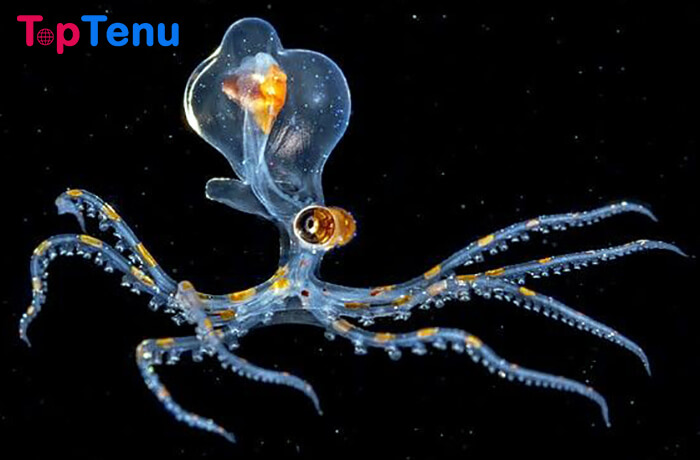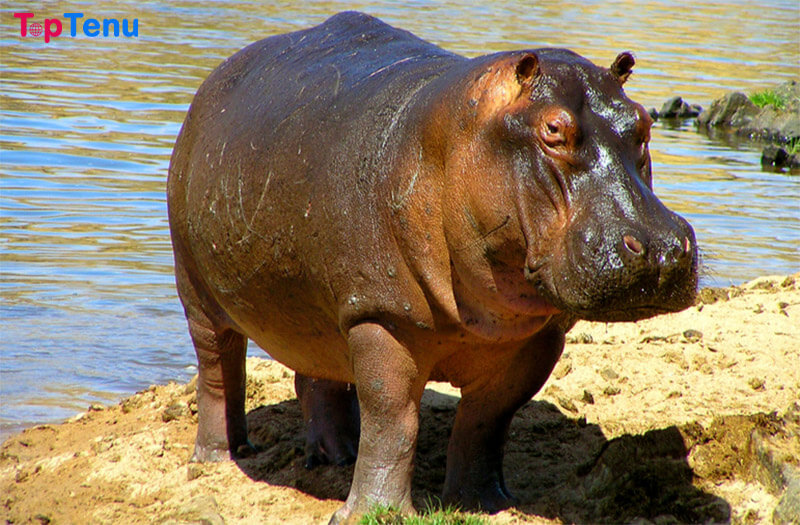A prehistoric sharks species is the earliest animal known to migrate over 300 million years ago and one of the oldest living creatures on earth. From a coil full of teeth to fins bending over its head, here are the Top 10 Strangest Prehistoric Sharks.
Top 10 Strangest Prehistoric Sharks
1. Otodus
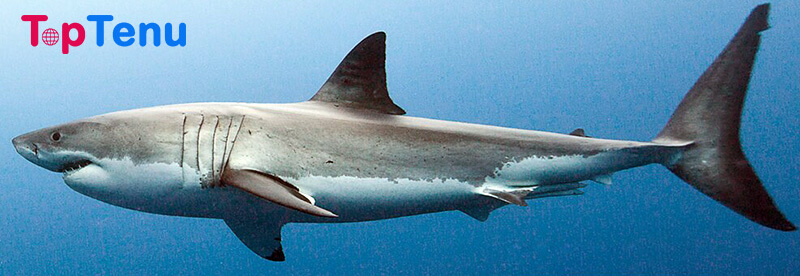
Otodus lived about 40 million years ago, and it was a beast. It’s nowhere as big as the biggest shark ever, the Megalodon, but it would still have dwarfed any shark that exists today, with a typical size being one and a half times the size of the biggest Great White Shark on record.
If it managed to stay away from these, then it would have been able to stand up against most other marine creatures and would have eaten anything it could get hold of- from large fish to small mammals.
Evidence of the Otodus from the fossil record is sent when the mega-toothed sharks begin appearing, which is believed to be because many of the new species evolved from the Otodus. It might be a good thing for mammal’s sake, that it’s no longer around too.
2. Helicoprion
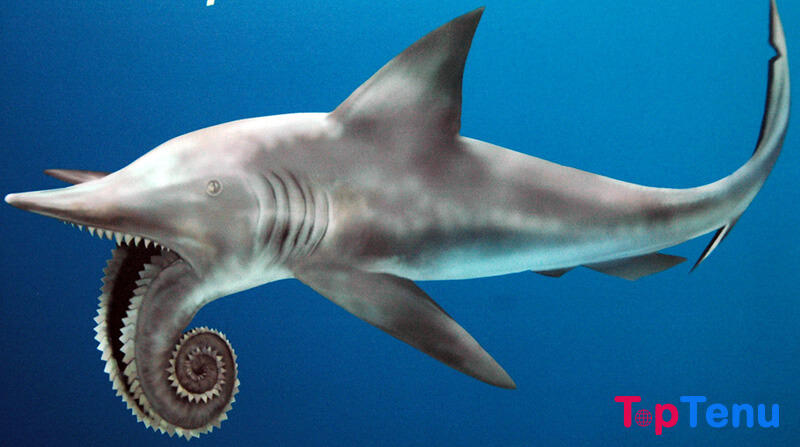
The Helicoprion lived around 270 million years ago, and the first fossil of the 20-foot beast was found in 1899 by a Russian Geologist.
Since the discovery of the remains, various theories have been on how the teeth fit inside the Helicoprion’s mouth, because of their unusual shape.
Was it more like a sawfish, curling up and out, or maybe even the complete opposite? Recent research, and further specimens, have shown that the truth is maybe stranger than people had expected.
The whorl of teeth is now thought to have inside the mouth, almost like a tongue, completely contained within the lower jaw-continually growing up.
This is likely to make up for the fact that it didn’t have any teeth on its upper jaw and would have helped break down the soft-bodied prey, like fish and cephalopods it fed on.
When it closed its jaw, the lower part would move back and slice the flesh of its meal towards the back of its mouth.
3. Cladoselache
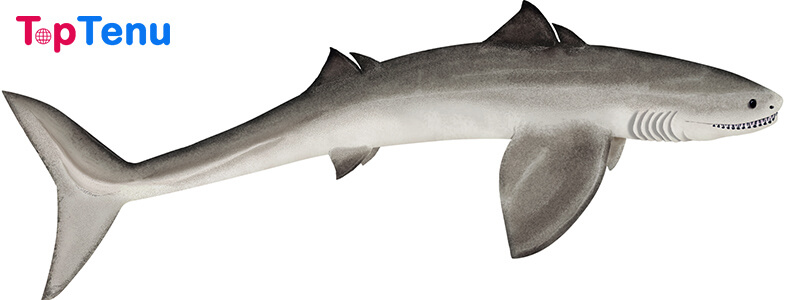
Fossils have only been found in the USA, and it’s often regarded as one of the first true sharks to enter the fossil record.
Despite this, there are a number of differences between this species and those that we see today. Growing up to 6 feet long, 2 things are missing from the Cladoselache that other sharks have- their claspers.
These are the missile-looking projections that sharks have on their undersides, and are the means for them to transfer sperm between them and their mate.
Without these, it’s unknown how this species was able to reproduce, with some thinking they were more like ordinary fish in this sense.
Its eyes were positioned far forward on the head, which suggests it relied heavily on vision to navigate, and would have, therefore, swum in shallower waters.
The streamlined body shape shows it was an extremely agile predator, backed up by the type of teeth it has and the remnants of prey found in fossils.
Most food found in their stomachs had been eaten tail first, having been caught by the shark, and the teeth are far more effective at grabbing prey than slicing through it.
Also Read: Top 10 Most Expensive Fish in the World
4. Edestus
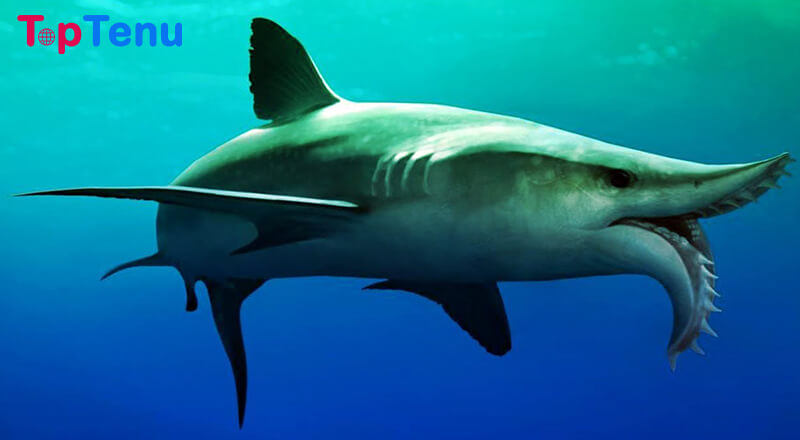
The Edestus lived about 350 million years ago. While most of its body is similar to those of the sharks you see today, the most striking feature was its head, with arcs of teeth on both the roof and the floor of its mouth.
Since its first discovery, paleontologists have wondered how it would have used this configuration to eat its prey. Recent research has suggested that rather than crushing meals with its teeth instead, they use them in a vertical thrusting manner.
By moving the front part of its body up and down, it would have stunned and torn its prey enough that it would be able to swallow it wholly within a few seconds.
5. Xenacanthus
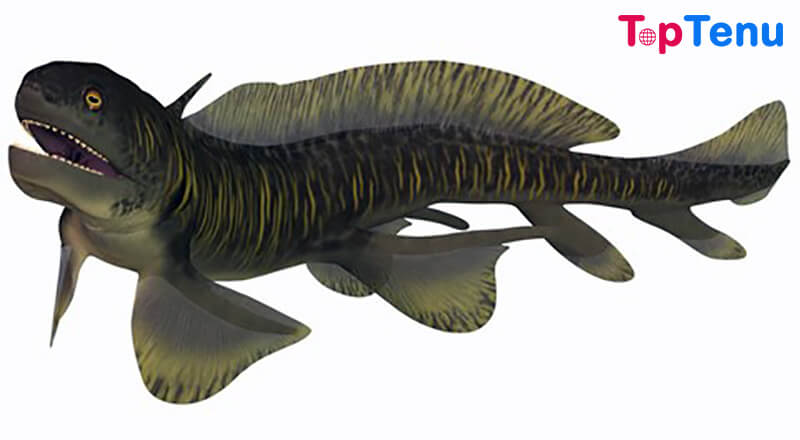
Xenacanthus have been found in the US, Europe, and India, but their habitat is thought to have been much broader because of the wide range of environments in which they could survive.
Growing up to 3.5 feet long, the most striking thing about this shark is that it hardly looks like a shark. If anything, it looks much more like an eel.
Some researchers have suggested that this spike could have been poisonous like those of a ray- after all, the two species aren’t all that different.
It also had unusually shaped teeth, which area v shape. This would have allowed them to exert much greater pressure and would have been ideal for crushing through the protective shells of their prey- like crustaceans and heavily scaled fish.
6. Falcatus

The Falcatus was a very strange looking prehistoric sharks. Whereas the dorsal fin in most fish rises and curves backward, that of the male Falcatus bends forwards over its head.
The fact this only occurs on the males would suggest that it’s only for display purposes, and didn’t have any offensive or defensive abilities. The shark itself was only about 10 inches long and had very large eyes compared to its body size, which implies that they lived in fairly deep waters where only a small amount of light was able to reach.
The orientation of their fins would have allowed them to swim fast through the water, so they would have been able to chase after any small fish or invertebrates with ease.
7. Stethacanthus
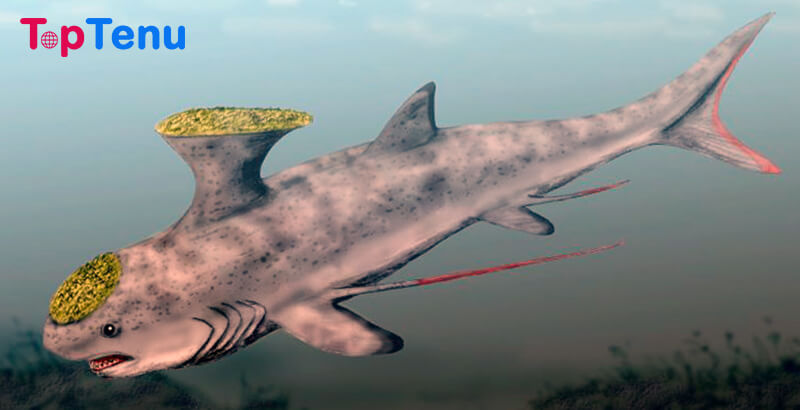
The Stethacanthus lived between 390 and 320million years ago. Fossils were first found in the 1800s, but have since been discovered across America, Russia, China, and Europe. This shark’s name translates as “chest spike”.
It has small spike-like structures on top of its head, but the males also had an unusually shaped fin from their upper back, which was also covered in spikes.
It’s now thought that it helped them stay attached to females while mating. They weren’t a very large species, growing up to 2 or 3 feet long, and weighing up to 20 pounds.
The shape of their fins, particularly with the spikey growths on them, meant that they weren’t very fast or agile in the water, and were most likely bottom feeders who targeted slow-moving prey. Its small teeth wouldn’t have allowed it to attack anything too large but would have been more than enough to tear the flesh of small fish and help crack open crustaceans.
Also Read: Top 17 Best Police Dog Breeds in the World
8. Mongolepis
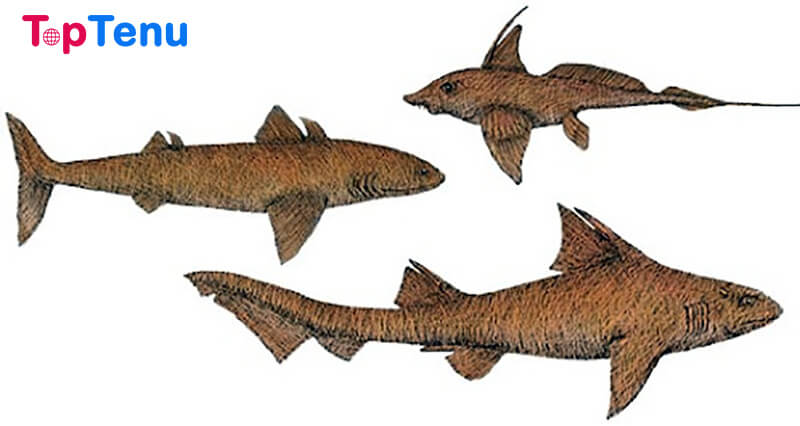
With fossil records of Mongolepis dating back to about 420 million years ago. Very little is known about how these sharks lived, what they ate, or what they even looked like, so I don’t have that many pictures.
All that remains are extremely rare fossilized teeth, and even they are very different from those of the sharks that we see today.
Modern-day sharks have evolved with skin made from tooth-like structures, known as placoid scales, but the scales of the most ancient sharks are far more similar to those of other fish.
This further supports the idea that they were among the first species of the shark because they would have only just begun taking a different evolutionary route to other types of fish.
9. Scapanorhuynchus
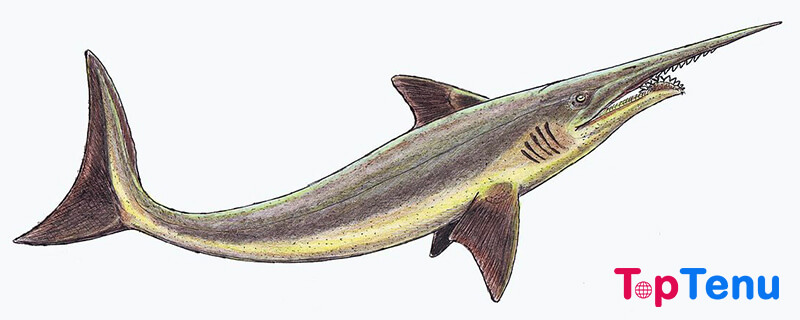
The Scapanorhynchus is a prehistoric sharks that resembles today’s Goblin sharks.
Here, the vision would be completely useless, but the snout’s ability to detect electrical impulses of other living organisms would allow the shark to hone in on them without much difficulty.
Their tail fin was much larger than the bottom, which would suggest they weren’t very strong swimmers in open water.
10. Hybodus
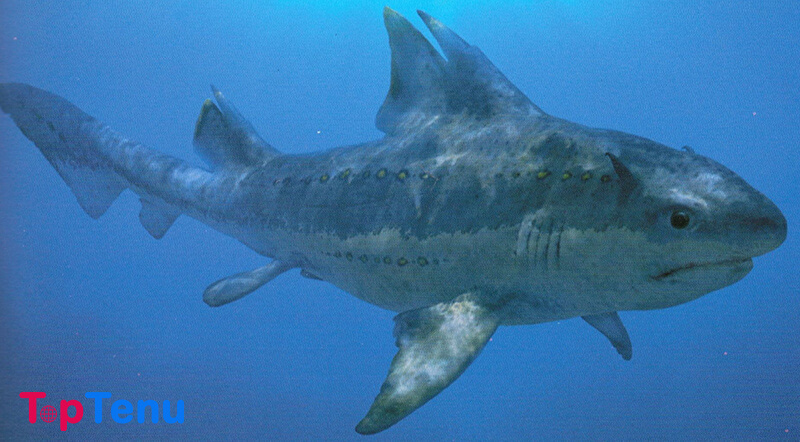
The first teeth of Hybodus were found in 1845 in England. They lived in the oceans between the 259 million to 66 million years ago.
It’s therefore thought to be one of the most effective shark species to have ever lived, particularly because it wasn’t the dominant predator when it had to contest with much larger monsters like the Plesiosaurs and Mosasaurs. They were well adapted to the treacherous oceans because they had two sets of teeth.
Final Words:
If you like This Article Top 10 Strangest Prehistoric Sharks That Ever Lived then Give him Your Feedback In Comments.
Follow TopTenu.com me on Social Media Platform and also share Knowledge With Your Friends…
Read Our Other Articles.

